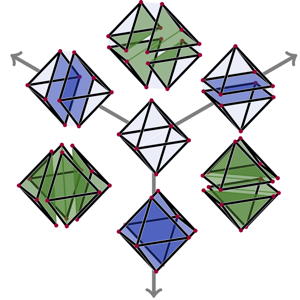Tidligere arrangementer - Side 3
An interdisciplinary workshop for bachelor and master students interested in learning and discussing about social discrimination in Norway
The PLATFORM-project at University of Oslo’s Department of Musicology invites paper contributions to a symposium on the platformization of music production.
We’re excited to announce that Professor Paul Théberge (Carleton University) will give a keynote talk titled "Any Sound an AI Can Imagine: Making music in the age of platform culture".
How can Norway and the EU achieve sustainable competitiveness in a geopolitically transforming world?
Research is meant to be shared. Learn the tools you need to become confident in communication from the stage. Welcome to the workshop led by actress Agnete Haaland.
The Oil and Society research network welcomes all staff and students to a presentation with professor Gavin Bridge (Durham University). Professor Bridge will present ongoing work (with James Marriott) under the heading "What now for the UK oil complex?"
The 4th Oslo Student Conference on Medieval Europe. This year’s theme is "Lost in Translation"
The exhibition explores the relationship between climate change and societal change during the Little Ice Age and asks: Can we learn something from a 300-year-old climate crisis?
Kulturarvsdagen er en dag for dialog og til inspirasjon for alle som studerer og arbeider med kulturarv og kulturminner.
A workshop between researchers from University of Oslo, Queen Mary University of London and KTH Royal Institute of Technology.
Welcome to this year's first gathering of the Oil & Society research network, which will focus on carbon capture and storage (CCS).
Welcome to the first SUSTAINITtalk where Professor Einar Broch Johnsen will present the innovative project, Digital Twin. What is a digital twin?
Hei du! Lurer du p? hva du skal bli? Bli med p? inspirasjonsdagen og h?r hva studenter innen kjemi, psykologi, farmasi, ern?ring, odontologi og medisin forteller fra sine fag. Gratis arrangement.
The convention is an annual networking event that brings together Nordic and invited international experts to present their research and to discuss latest developments in the field of microphysiological systems, organoids and organ-on-chip technology.
Join us for an interactive 2-hour workshop on image sonification designed for biology researchers eager to expand their toolkit for data exploration. During the workshop you will get introduced to the potential of integrating auditory feedback into your research process.
Students from SUSTAINIT, along with the Green Office at UiO, will host an interactive workshop part of the Day Zero Program at the SDG Conference Bergen.
In this final seminar, Stine Engen will present the draft of her PhD thesis titled “On green finance and the turning of climate change into climate risk”.
Positive geometry is a recent branch of mathematical physics which present exciting connections with real, complex and tropical algebraic geometry.
In this talk, we introduce the topic by developing the positive geometry of del Pezzo surfaces and their moduli spaces.
We will analyze their connected components, likelihood equations and scattering amplitudes.
The talk is based on joint work with Early, Geiger, Sturmfels and Yun.
Abstract: I will introduce a certain configuration space associated with a graph, and compute its cohomology ring. It turns out to be related to internal zonotopal algebras, which were introduced in the context of approximation theory and show up in many different contexts.
This is joint work with Colin Crowley, Galen Dorpalen-Barry, and Andre Henriques.
Positroids are a class of matroids that were introduced by Postnikov in 2006 that index a certain stratification of the totally non-negative Grassmannian. These matroids are famously in bijection with a “zoo” of combinatorial objects including Grassmann necklaces and plabic graphs. We introduce a new family of positroids called rook matroids that arise from restricted rook placements on a skew shaped board and discuss it in terms of this zoo. We highlight the transversal structure of rook matroids and the slightly mysterious relationship they share with lattice path matroids. This is joint work with Per Alexandersson and ongoing work with Irem Portakal and Akiyoshi Tsuchiya.
In a circular economy, products and services are designed for longevity, reuse, and recycling. It contrasts with the traditional linear economy by promoting a closed-loop system where materials are kept in circulation, reducing environmental impact and depletion of raw materials.
Temaet for konferansen i ?r er klimapolitikk og klimainvesteringer. Innledere vil v?re John Hassler (Professor i samfunns?konomi ved Stockholms universitet), Bj?rnar Baugerud (Leder for klimainvesteringsfondet/NorFund), Steinar Holden (Professor ved ?konomisk institutt, UiO) og Kristin Halvorsen (Direkt?r ved Cicero Senter for klimaforskning).
Workshop at University of Oslo
Join us in exploring how green energy and digital solutions can work together to build a sustainable future.
During this webinar, we will present the final results of the work undertaken in the Ocean Grid research project in relation to regulatory conditions.


















